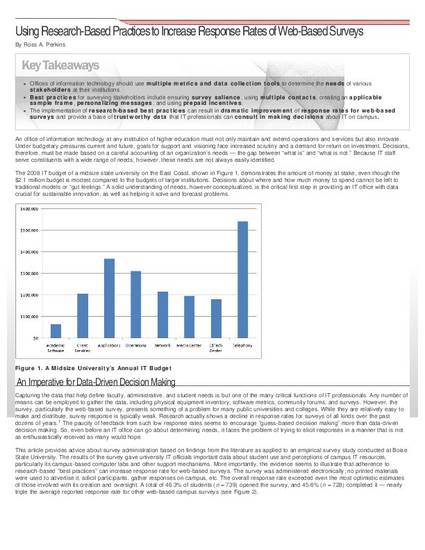
An office of information technology at any institution of higher education must not only maintain and extend operations and services but also innovate. Under budgetary pressures current and future, goals for support and visioning face increased scrutiny and a demand for return on investment. Decisions, therefore, must be made based on a careful accounting of an organization’s needs — the gap between "what is" and "what is not." Because IT staff serve constituents with a wide range of needs, however, these needs are not always easily identified.
The 2008 IT budget of a midsize state university on the East Coast, shown in Figure 1, demonstrates the amount of money at stake, even though the $2.1 million budget is modest compared to the budgets of larger institutions. Decisions about where and how much money to spend cannot be left to traditional models or "gut feelings." A solid understanding of needs, however conceptualized, is the critical first step in providing an IT office with data crucial for sustainable innovation, as well as helping it solve and forecast problems.
This document was originally published by EDUCAUSE in Educause Quarterly. This work is provided under a Creative Commons Attribution-Noncommercial-No Derivatives Works 3.0 license. Details regarding the use of this work can be found at: http://creativecommons.org/licenses/by-nc-sa/3.0/legalcode.
Available at: http://works.bepress.com/ross_perkins/5/
